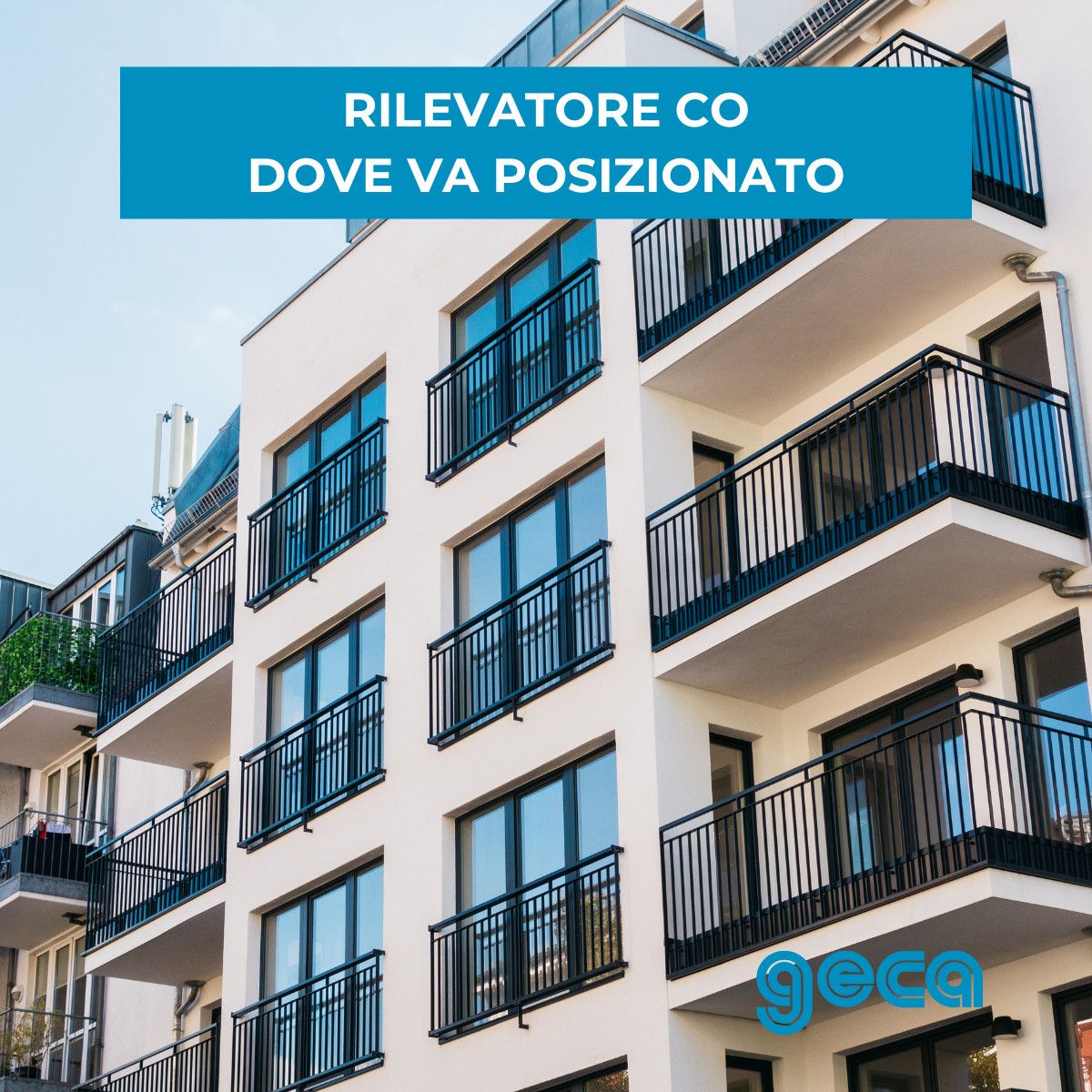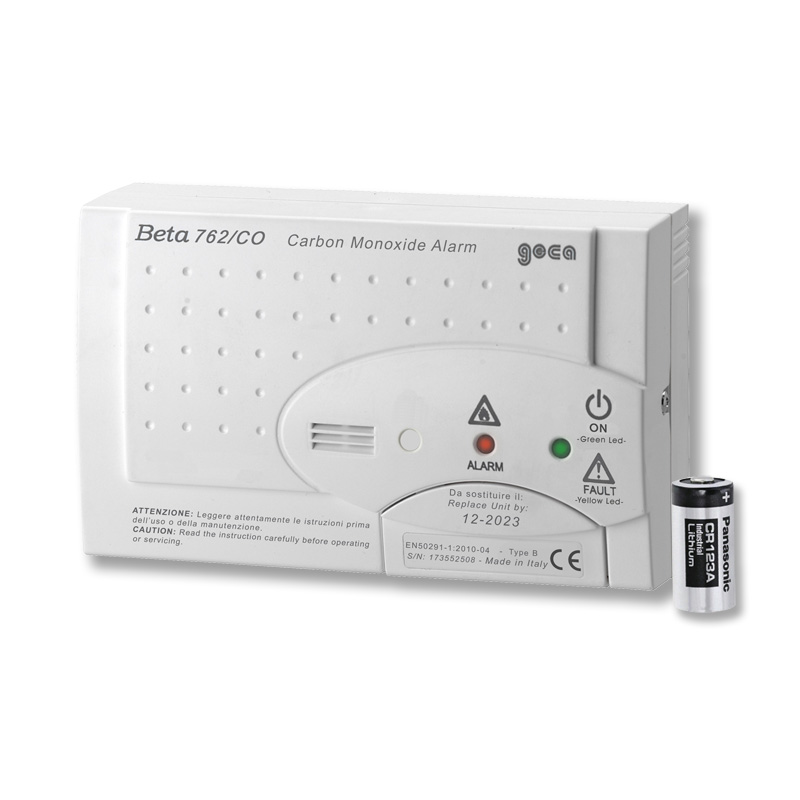
If you search online, you'll find many tutorials explaining where to place a CO detector. Most of these tutorials provide correct and useful information for anyone looking to get an idea of how to properly install a carbon monoxide detector.
However, since it's a life-saving device designed to protect people from an invisible and often underestimated enemy, it's important that you understand the difference between knowing how to do something and being able to do it properly and according to regulations.
In the case of CO detectors, this can mean compromising the effectiveness and lifespan of the device, risking your health (or even your life) and that of your family or guests, and facing legal and financial troubles.
This article is intended to provide you with all the information you need to make an informed choice, but with the warning that it's always advisable to rely on a professional installer.
What is Carbon Monoxide
Carbon monoxide is a highly toxic gas dangerous to human health. It is released from any malfunctioning or faulty combustion appliance (gas stove or boiler, wood stove, fireplace). Carbon monoxide forms whenever a carbon-containing substance (wood, gas, oil) burns incompletely, especially if there's a lack of oxygen because the environment is enclosed or not adequately ventilated.
This is why it's recommended to ventilate rooms well, check the draft of chimneys, and periodically check boiler emissions (also mandatory by law).
Being completely odorless and colorless, this invisible gas accumulates in the environment without occupants noticing it. Depending on the concentration of carbon monoxide and the exposure time, symptoms such as nausea, headaches, and dizziness can occur, progressively worsening.
These are common discomforts that are difficult to attribute to carbon monoxide due to its imperceptibility. Especially when sleeping: the sleeping person doesn't notice anything and dies from poisoning due to prolonged exposure to the gas, whose concentration increases over the hours.
Hence the advice never to leave heating appliances such as stoves (gas or wood) and fireplaces on at night while sleeping.
Purpose of a CO Detector
There are precise tables indicating the danger of carbon monoxide to people's health. For example, if the CO concentration in the air is 100 ppm (parts per million, equivalent to 0.01%) within 2-3 hours, a slight headache appears; but if the concentration rises to 6400 ppm (0.64%), headaches and dizziness occur within 1-2 minutes, and death occurs after just 10-15 minutes of exposure.
The only way to defend against this invisible enemy, therefore, is to equip yourself with a detector. These are devices equipped with a sensor that, upon exceeding a certain gas concentration threshold, triggers an acoustic and visual alarm.
For the device to truly prevent health damage, it must trigger the alarm even at very low concentrations. In practice, the instrument checks how much carbon monoxide is in the air and for how long, and adjusts accordingly.
For example, the alarm may trigger if the sensor detects a concentration of 50 ppm for 70 minutes, or 300 ppm for 1 minute.
To guide you in your choice, read our article dedicated to CO detectors. [LINK TO ARTICLE].
Where to Place the Carbon Monoxide Detector
The first aspect to consider is the choice of the environment in which to place the detector. Depending on the layout of the rooms and the size of the property, it may be necessary to install more than one:
- In rooms where combustion appliances are present, such as the kitchen (gas stoves and ovens, gas water heaters and/or heating boiler); or the living room, where a wood stove or fireplace is in use;
- In the hallway or another central area, so that the alarm is audible throughout the house;
- In bedrooms, or nearby, to protect sleeping individuals;
- On each floor of the house if the dwelling is spread over multiple floors.
The criteria for installing and maintaining gas detectors in domestic settings are dictated by the UNI 11522 Standard. According to these provisions, the detector can be placed:
- On the ceiling, provided it's at least 30 centimeters away from the walls;
- On a wall, no less than 15 centimeters from the ceiling;
- If a combustion appliance is present in the room, at a horizontal distance between one meter (to avoid false alarms) and three meters.
But these are generic indications that hardly work for all concrete situations. For example, there might be furniture obstructing airflow; or there's a fan altering the airflow; or the humidity level is excessive.
Why Turn to a Professional Installer
A trained eye doesn't overlook these critical elements, which can compromise the correct functioning of the device and negate its safety. That's why it's always advisable (and obligatory) to turn to an authorized installer, capable of making a careful assessment of the situation and choosing the most suitable position.
They are specialists in the field of home safety who have the experience and skills necessary to properly install a safety device. They are qualified for the profession and have the necessary tools and equipment. Moreover, they are familiar with specific regulations, as well as other local provisions and guidelines, and their task also includes conducting tests, verifying the compliance of the device, and ascertaining its expiration date.
After all these checks, they will be able to issue you a system compliance certificate, the document attesting to the state of the art and protecting you from future problems.
Remember: a properly installed and compliant installation is the best guarantee of safety and performance that meets your expectations. A detector not installed correctly won't alert in time to allow people to evacuate safely.
When is it Mandatory to Install a CO Detector
In Italy, the installation of a domestic carbon monoxide detector is not legally required, except for residential units subject to short-term rentals or tourist/receptive purposes.
The obligation was introduced from January 2024 with the conversion into law of the short-term rental decree, under which each property must be equipped with certain detection and control devices (gas leak detectors and fire extinguishers).
In all other cases, even if not legally mandatory, installing a carbon monoxide detector is an important investment for health protection and property enhancement. Also, consider that there may be local (municipal or regional) provisions that need to be followed to be compliant.
With Geca, Safety is Guaranteed
Geca is a company with over 30 years of experience in the field of home safety, offering a wide range of devices designed, manufactured, and tested in Italy and available for immediate delivery.
They are all certified products, compliant, guaranteed for performance and durability, with spare parts always available.
For your safety, rely on Geca: we surely have the product that suits your needs. For example, Beta is the carbon monoxide detector, easy and quick to install, with a guaranteed lifespan of 6 years for both the battery and the sensor.
But if you have doubts, don't hesitate to contact us: we can offer you specific advice for your every need.

